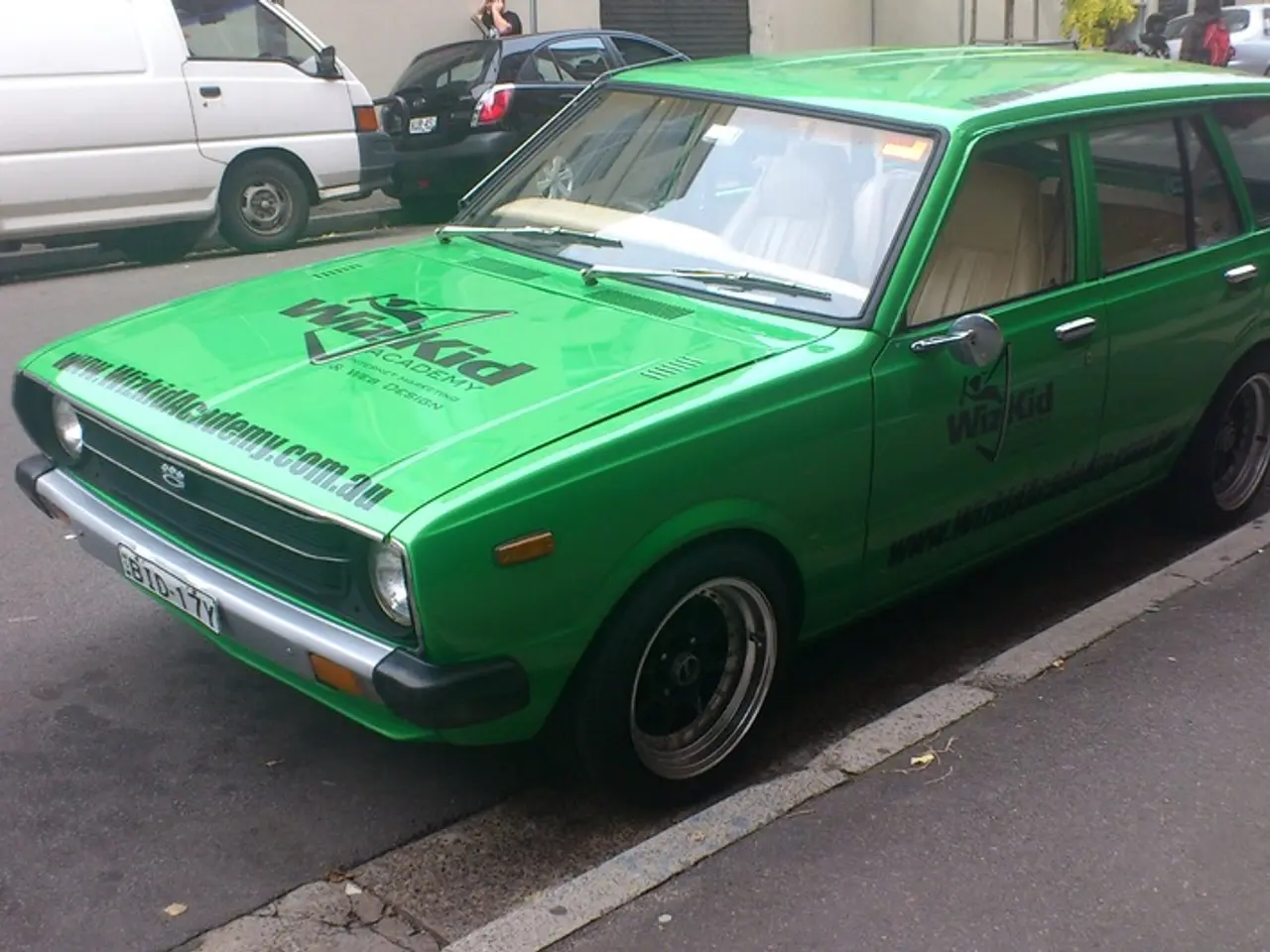Strategies for avoiding road rage incidents as a driver
In the UK, road rage incidents are a growing concern, often triggered by various risky and aggressive driving behaviours. According to recent studies, common triggers include speeding, tailgating, sudden braking, and dangerous overtaking maneuvers [1][4]. These behaviours not only increase the likelihood of accidents but also create a tense and intimidating environment on the road.
Other contributing factors include using mobile phones while driving, not wearing seat belts, and driving under the influence, as these actions increase stress and contribute to a more chaotic driving environment [1]. To avoid becoming a target of road rage incidents, it is essential to maintain calm and courteous driving behaviour.
GEM Motoring Assist offers several steps to reduce the risk of road rage:
1. Avoid aggressive driving habits such as tailgating, abrupt lane changes, or sudden braking. 2. Keep a safe distance from other vehicles to reduce tension and allow time for reaction. 3. Adhere strictly to speed limits and traffic laws, reducing chances of provoking aggressive drivers. 4. If confronted by an aggressive driver, do not engage or escalate the situation. Avoid eye contact, do not respond to gestures, and if safe, move away or allow them to pass [2][3]. 5. Plan journeys to avoid stress, including allowing extra time to accommodate delays, which reduces pressure and frustration that may fuel road rage.
As the popularity of electric cars increases, a new source of conflict has arisen: 'ICEing', where petrol or diesel cars, or plug-in hybrids, park in dedicated EV bays. To avoid this issue, it is essential to show restraint and keep calm. If you find yourself in a queue at an EV charging station, wait for a signal from a fellow motorist before pushing into traffic.
In a study by CAP HPI, 22 percent of motorists admitted to getting out of their car to argue with another driver in a road rage incident [5]. To prevent such incidents, it is crucial to remain calm and polite. Say thank you and say sorry if you make a mistake. If you feel threatened, drive to the nearest police station or move to a busy area like a petrol station. If a would-be attacker persists, contact the police and/or press the horn repeatedly to deter them.
It is alarming to note that one in five road users in Britain are threatened with physical violence every year [6]. By adopting these simple tips, we can all contribute to a safer and more peaceful driving environment. Remember, remaining calm and polite is a good rule to avoid situations that could cause conflict, both in life and on the road.
References: [1] RAC Foundation (2021). Road rage in the UK: the triggers and the risks. Available at: https://www.racfoundation.org/assets/racfoundation/content/uploads/2021/06/RAC-Foundation-Road-rage-in-the-UK-the-triggers-and-the-risks.pdf [2] GEM Motoring Assist (2021). Road rage: how to avoid it. Available at: https://www.gemmotoringassist.com/advice/road-safety/road-rage-how-to-avoid-it [3] Highways England (2021). Avoiding road rage. Available at: https://www.gov.uk/government/publications/avoiding-road-rage/avoiding-road-rage [4] Department for Transport (2020). Reported road casualties in Great Britain: annual report 2019. Available at: https://www.gov.uk/government/publications/reported-road-casualties-great-britain-annual-report/reported-road-casualties-annual-report-2019--2 [5] CAP HPI (2020). Road rage: drivers admit to getting out of their car to argue with another driver. Available at: https://www.cap-hpi.com/news/road-rage-drivers-admit-to-getting-out-of-their-car-to-argue-with-another-driver [6] RAC (2020). One in five drivers threatened with physical violence every year. Available at: https://www.rac.co.uk/drive/advice/one-in-five-drivers-threatened-with-physical-violence-every-year/
- The growing concern of road rage incidents in the UK is frequently instigated by dangerous driving practices like speeding, tailgating, and aggressive overtaking.
- Adopting hybrid or electric vehicles (EV) can minimize contributions to road rage, as they produce less emissions and reduce traffic congestion.
- 'ICEing', the act of parking petrol or diesel cars in designated electric vehicle bays, has been a new source of conflict in the rise of EV popularity.
- To prevent road rage incidents, maintaining a courteous driving style such as steady speed, safe following distance, and not engaging with aggressive drivers, is important.
- By following GEM Motoring Assist's advice to avoid aggressive habits, focus on de-escalating confrontations, and planning stress-free journeys, drivers can create a more peaceful driving environment.
- Remaining calm and polite in extraordinary driving situations can help diffuse potential conflicts, including apologizing when necessary and seeking help from authorities when feeling threatened.
- The science of mental health play a key role in the effects of road rage, as it creates stress and impacts our overall well-being, and so health-and-wellness should be a top priority for motorists.
- Embracing a lifestyle that promotes fitness-and-exercise can further lower stress levels, helping drivers manage their emotions on the road and contribute to a safer, more harmonious driving community.




